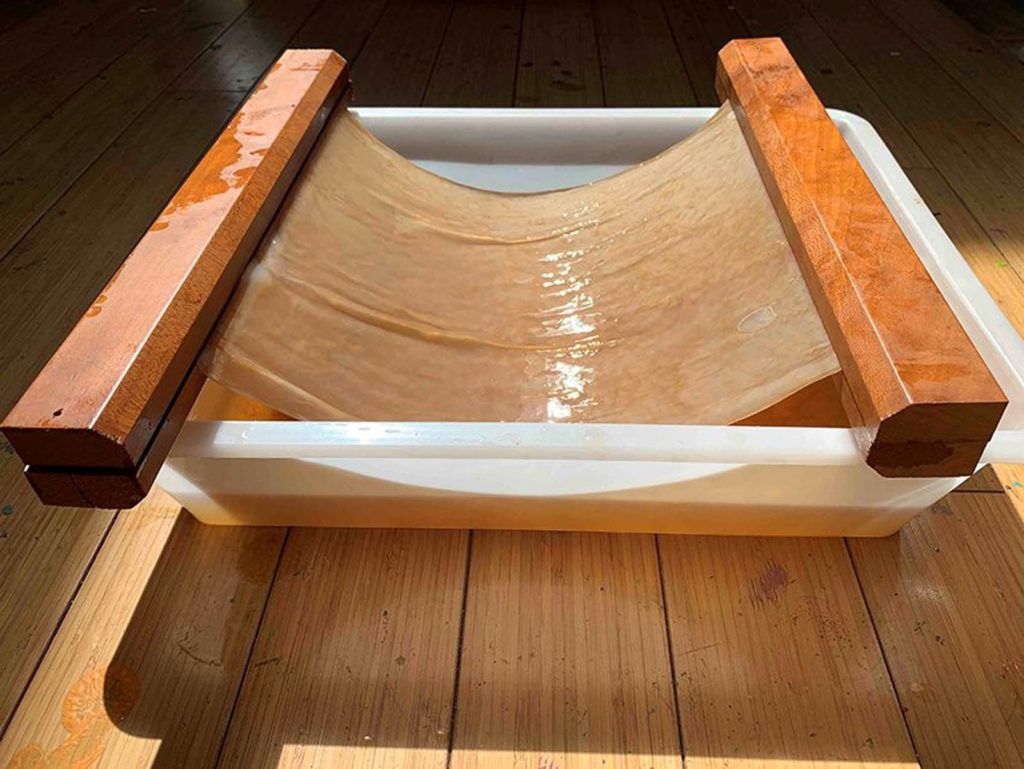During the current COVID-19 pandemic, the race has been on to provide adequate numbers of personal protective equipment (PPE). Designers, manufacturers and individuals at home have come out in force to offer creative solutions ranging from 3D printed shields to DIY face masks.

Since many of these designs have used plastic-based material, Elizabeth Bridges and Garrett Benisch of Sum Studio have sought to create an antimicrobial cellulose face mask. The bio-designers suggest that an earlier investment in sustainable bio-manufacturing could possibly have made PPE more readily available, and could offer a credible longer-term supply solution, as well.
N95 masks are made from melt-blown nonwoven material designed to filter particles containing pathogens. These materials are paramount in our fight to stop the spread of COVID-19. But essential workers have not had an adequate supply in many areas of the county. One reason for that is the machining and precision required to make the fabric; the machines that create melt-blown fabrics are expensive, complex and take months to build.
Bridges and Benisch have looked to the natural world, which is full of filters, membranes and woven barriers that are ready to be utilized or mimicked. To prove just how accessible these materials are, they decided to grow their own bacterial cellulose face mask in their home kitchen, while working on ways that this prototype could be iterated to function just like the meltblown N95 fabric.
Bacterial cellulose is created by a common bacteria, called xylinum acetobacter, on the surface of a liquid that they inhabit. The bacteria and its cellulose craftwork can be grown with as little as water, tea, sugar and a small sample to feed and let flourish. As the bacteria multiply, they knit cellulose fibers into a single membrane that can be harvested and dried as a workable material. though translucent and smooth to the human eye, microscopic images show the tight web of cellulose fibers that make up this natural and incredible knit.

Once the material is thick enough, it can be removed and hung to dry as a flat sheet that’s flexible and strong, but easily degrades into the environment. It can be waterproofed and oiled with natural ingredients to have the softness and strength of thin leather. The entire process takes around two weeks; long in its own right, but the creators suggest that it’s nothing compared to the geologic timescale of fossil fuels and their environmental cost. With multiple batches staggered in time, they imagine the production of this material could be scaled up quickly.
It could be grown in local municipalities, in people’s homes or even within the very hospitals that need them. As the bacteria knit to the shape of the container they are in, products can be grown in specifically shaped molds so that the sheets can be grown to standard specification.
With PPE like face masks made from cellulose, the life cycle of the product will match the user scenario. These masks would compost as easily as household vegetables.
 TEXTILES.ORG
TEXTILES.ORG


